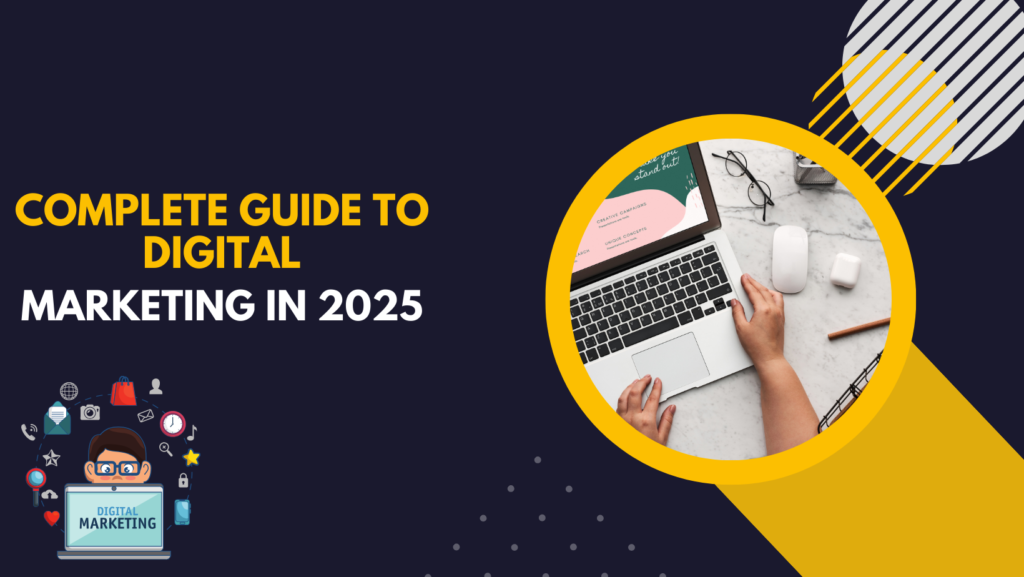Introduction
Google is the dominant force in the search engine industry, processing over 8.5 billion searches daily. Its algorithms constantly evolve to deliver the most relevant and high-quality search results to users. These changes, known as Google algorithm updates, significantly impact how websites rank in search engine results pages (SERPs). For brands and marketers, staying informed about these updates is crucial to maintaining visibility, traffic, and conversions.
In this blog, we’ll explore the significance of Google’s algorithm updates, key updates in recent years, and strategies that brands and marketers can use to adapt and thrive.
Understanding Google Algorithm Updates
Google’s algorithm is a complex system designed to retrieve data from its index and deliver the best possible results for a query. To improve the user experience, Google frequently updates its algorithm, sometimes through minor tweaks and other times through major core updates.
Algorithm updates fall into several categories:
- Core Updates – Broad changes that impact search rankings across various industries.
- Spam Updates – Designed to eliminate black-hat SEO tactics and low-quality content.
- Experience, Expertise, Authoritativeness, and Trustworthiness (E-E-A-T) Updates – Focus on ranking content from credible sources.
- Product Reviews and Helpful Content Updates – Encourage the creation of high-quality, user-first content.
Understanding these updates helps marketers optimize their strategies and align their content with Google’s evolving standards.
Major Google Algorithm Updates and Their Impact
1. Panda Update (2011)
Focus: Content quality Impact: Penalized thin, duplicate, and low-quality content; rewarded high-quality, informative content.
Marketing Takeaway: Brands must invest in well-researched, valuable content that meets user intent.
2. Penguin Update (2012)
Focus: Link quality Impact: Cracked down on spammy and manipulative link-building tactics.
Marketing Takeaway: Focus on earning high-quality backlinks rather than buying or using black-hat link-building techniques.
3. Hummingbird Update (2013)
Focus: Semantic search and natural language processing Impact: Enhanced Google’s ability to understand search intent rather than just keywords.
Marketing Takeaway: Content should be written for users, not just for search engines. Optimize for topics rather than individual keywords.
4. Mobile-Friendly Update (2015) (Mobilegeddon)
Focus: Mobile usability Impact: Penalized non-mobile-friendly websites.
Marketing Takeaway: Ensure websites are mobile-responsive to provide a seamless experience across devices.
5. RankBrain (2015)
Focus: AI-driven search results Impact: Introduced machine learning to help Google better interpret search queries.
Marketing Takeaway: User engagement metrics like click-through rates (CTR) and dwell time became crucial ranking factors.
6. Medic Update (2018)
Focus: E-A-T (Expertise, Authoritativeness, Trustworthiness) Impact: Primarily affected health, finance, and YMYL (Your Money Your Life) websites.
Marketing Takeaway: Brands must establish credibility by providing accurate, expert-backed content.
7. BERT Update (2019)
Focus: Natural language understanding Impact: Improved Google’s ability to interpret the context of words in search queries.
Marketing Takeaway: Write conversational, user-centric content that aligns with how people naturally search.
8. Core Web Vitals Update (2021)
Focus: Page experience Impact: Introduced ranking factors like Largest Contentful Paint (LCP), First Input Delay (FID), and Cumulative Layout Shift (CLS).
Marketing Takeaway: Brands must optimize page speed, interactivity, and visual stability.
9. Helpful Content Update (2022)
Focus: Content that provides real value Impact: Targeted websites with content written primarily for search engines rather than users.
Marketing Takeaway: Prioritize content that genuinely helps users instead of keyword stuffing or AI-generated content for rankings.
10. Spam Updates (Ongoing)
Focus: Reducing spam and manipulative tactics Impact: Websites using cloaking, keyword stuffing, or low-quality link schemes face penalties.
Marketing Takeaway: Follow ethical SEO practices and avoid shortcuts that could lead to ranking penalties.
How Marketers and Brands Can Adapt to Google Algorithm Updates
- Stay Updated with Google’s Announcements
- Follow Google’s Search Central Blog and industry sources like Moz, SEMrush, and Search Engine Journal.
- Focus on High-Quality Content
- Create well-researched, engaging, and informative content that satisfies user intent.
- Utilize E-E-A-T principles to establish credibility and trust.
- Optimize for User Experience (UX)
- Improve page speed, mobile responsiveness, and navigation.
- Enhance readability with proper formatting and visuals.
- Diversify Traffic Sources
- Don’t rely solely on organic search. Use social media, email marketing, and paid advertising.
- Invest in Technical SEO
- Ensure proper website structure, schema markup, and XML sitemaps.
- Fix broken links and reduce website errors.
- Build High-Quality Backlinks
- Engage in guest blogging, digital PR, and collaborations to earn authoritative links.
- Leverage AI and Automation
- Use AI tools like ChatGPT, SurferSEO, and Clearscope to optimize content strategy.
Conclusion
Google algorithm updates will continue to evolve, shaping the future of SEO and digital marketing. Brands and marketers who stay proactive, prioritize quality content, and adapt their strategies will not only survive but thrive in the ever-changing search landscape.
By understanding Google’s updates and aligning with best practices, businesses can enhance their search visibility, maintain a strong digital presence, and drive long-term success.


